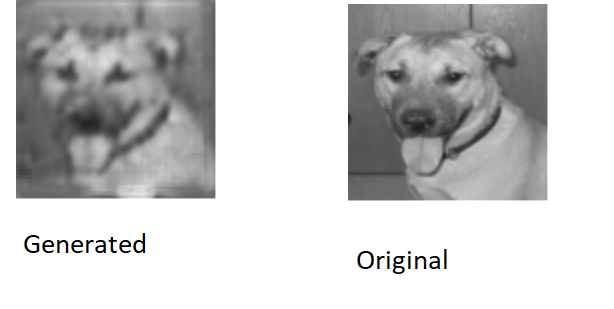for CNN encoder-decoder my MSE loss is very low (Loss: tensor(0.0067, grad_fn=))
but still output images are not clear .
my network architecture is
Layer (type) Output Shape Param #
Conv2d-1 [-1, 6, 98, 98] 60
Conv2d-2 [-1, 10, 96, 96] 550
Conv2d-3 [-1, 20, 94, 94] 1,820
Conv2d-4 [-1, 9, 92, 92] 1,629
MaxPool2d-5 [[-1, 9, 46, 46], [-1, 9, 46, 46]] 0
MaxPool2d-6 [[-1, 9, 23, 23], [-1, 9, 23, 23]] 0
Conv2d-7 [-1, 9, 23, 23] 738
MaxPool2d-8 [[-1, 9, 11, 11], [-1, 9, 11, 11]] 0
MaxUnpool2d-9 [-1, 9, 23, 23] 0
Conv2d-10 [-1, 9, 23, 23] 738
MaxUnpool2d-11 [-1, 9, 46, 46] 0
MaxUnpool2d-12 [-1, 9, 92, 92] 0
Conv2d-13 [-1, 9, 92, 92] 738
Conv2d-14 [-1, 20, 94, 94] 1,640
Conv2d-15 [-1, 10, 96, 96] 1,810
Conv2d-16 [-1, 6, 98, 98] 546
Conv2d-17 [-1, 1, 100, 100] 55
================================================================
Total params: 10,324
Trainable params: 10,324
Non-trainable params: 0
images: 
Please let me know what other parameters I can tweak so that image will be clear
lr = 0.01 , epochs = 10
